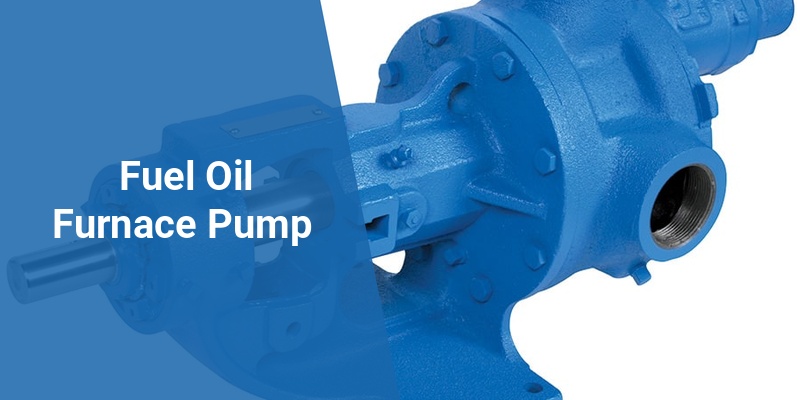A fuel oil furnace pump plays a critical role in heating systems that use oil as fuel. It is responsible for delivering the fuel oil from the storage tank to the burner, ensuring efficient combustion and optimal furnace operation. Understanding the various types of pumps, how they function, and proper maintenance can help homeowners and HVAC professionals enhance furnace reliability and heating efficiency.
| Aspect | Description |
|---|---|
| Primary Function | Delivers fuel oil from the tank to the furnace burner |
| Common Types | Gear pumps, rotary vane pumps, and transfer pumps |
| Power Source | Electric motor-driven |
| Maintenance Focus | Filter cleaning, leak inspections, flow rate checks |
| Signs of Failure | Irregular heating, noisy operation, fuel leaks |
What Is a Fuel Oil Furnace Pump and How Does It Work?
A fuel oil furnace pump is an integral mechanical device in oil-fired heating systems. Its primary purpose is to pump liquid fuel from the oil storage tank through fuel lines to the furnace’s burner assembly. This process enables the burner to atomize the fuel for combustion, generating heat.
The pump is typically driven by an electric motor and operates at specific pressure levels to ensure consistent fuel flow. It also includes components such as filters and pressure regulators to maintain fuel quality and flow stability.
Types of Fuel Oil Furnace Pumps
There are several types of pumps used in fuel oil furnaces, each suitable for different applications:
- Gear Pumps: Common in residential furnaces, these pumps use meshing gears to move fuel and provide reliable, steady flow.
- Rotary Vane Pumps: Utilize rotating vanes that slide in and out to move fuel smoothly and maintain pressure.
- Transfer Pumps: Often used to move fuel from large tanks to the furnace pump, these pumps handle bulk transfer but not necessarily precise delivery to the burner.
Importance of the Fuel Oil Furnace Pump in Heating Systems
The furnace pump’s consistent operation ensures stable combustion and heat output. Without it, the burner cannot receive the correct amount of fuel, leading to inefficient burning, waste of fuel, or furnace shutdown. The pump also helps prevent air from entering fuel lines, which is crucial for avoiding burner misfires and maintaining heating performance.
Common Symptoms of a Failing Fuel Oil Furnace Pump
Recognizing early signs of pump malfunction can prevent costly repairs or heating system downtime. Look for these symptoms:
- Noisy pump operation, such as whining, rattling, or knocking sounds
- Irregular heating cycles or sudden loss of heat output
- Fuel leaks around the pump housing or connected lines
- Burner failing to ignite or frequent flameouts
- Reduced fuel pressure detected by furnace control diagnostics
Maintaining Your Fuel Oil Furnace Pump for Longevity
Regular maintenance is essential for optimal pump lifespan and performance. Homeowners and technicians should adhere to the following best practices:
Call 888-906-9139 for Free Local HVAC Quotes – No Obligation, Just Savings!
- Clean or replace fuel filters regularly to prevent clogging and strain on the pump
- Inspect fuel lines and pump seals for leaks or wear
- Ensure proper electrical connections and motor function
- Check pump flow rates and pressure levels during routine service
- Address any unusual noises immediately to avoid pump damage
How to Select the Right Fuel Oil Furnace Pump
Choosing the best pump depends on furnace size, fuel type, and operational requirements. Consider these factors:
| Factor | Consideration |
|---|---|
| Flow Rate | Match pump capacity with furnace fuel consumption needs |
| Pressure Rating | Ensure pump can deliver required pressure to burner |
| Fuel Compatibility | Check if compatible with #1, #2 heating oil, or other blends |
| Motor Type | Electric motors are standard; ensure voltage matches system |
| Durability and Warranty | Look for pumps with corrosion resistance and solid warranties |
Installation and Safety Considerations for Fuel Oil Furnace Pumps
Proper installation ensures efficient and safe furnace operation. Important considerations include:
- Electrical wiring should comply with local codes and manufacturer specifications to avoid hazards
- Fuel lines must be leak-free and securely connected to prevent leaks
- The pump should be mounted securely on vibration dampeners to reduce noise and mechanical stress
- Regular safety checks for fuel odor or signs of leakage can prevent fire risks
Popular Fuel Oil Furnace Pump Brands and Models
Several manufacturers produce reliable pumps well-suited for residential and commercial heating systems:
- Carlin: Known for ease of maintenance and efficient performance
- Beckett: Offers robust gear pumps widely used in oil furnaces
- Riello: Provides high-quality rotary vane pumps with durable construction
- Little Giant: Known for reliable transfer pumps used in fuel oil systems
Troubleshooting Tips for Fuel Oil Furnace Pumps
When troubleshooting pump issues, follow these steps:
- Check power supply and electrical connections to the pump motor
- Inspect fuel filters for clogging and replace if necessary
- Listen for unusual noises indicating mechanical wear or cavitation
- Verify fuel line integrity and look for leaks
- Measure fuel pressure using a gauge and compare to manufacturer specifications
- Consult furnace error codes or diagnostics for pump-related faults
